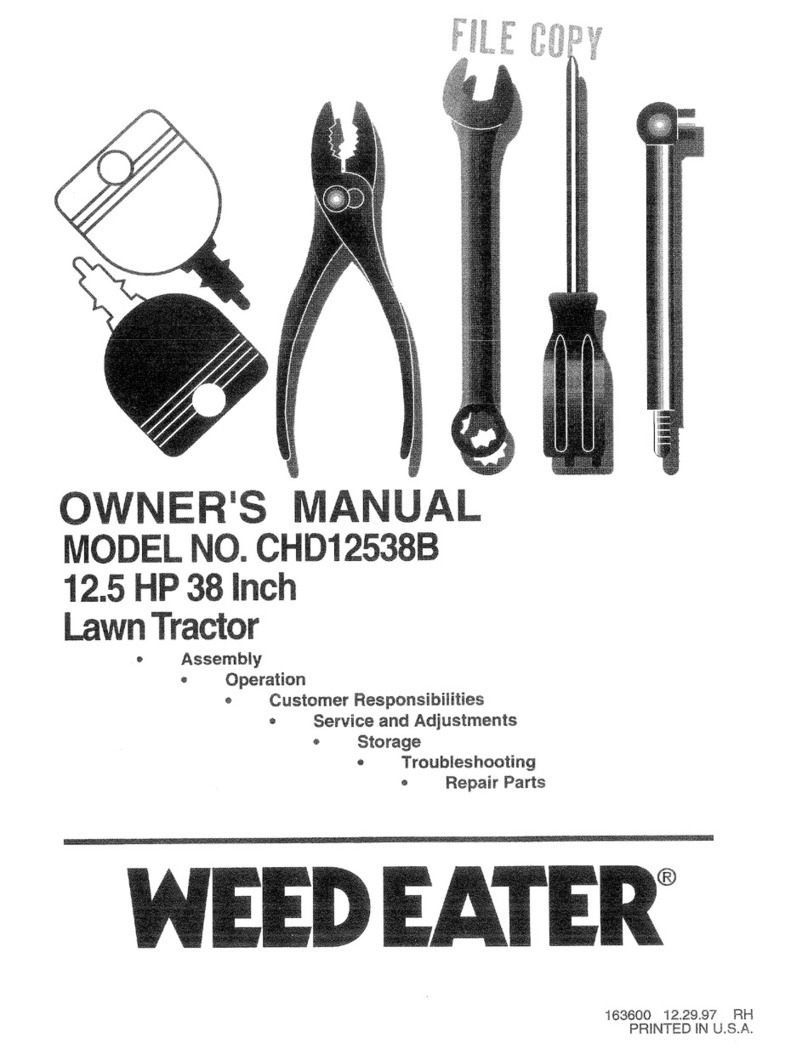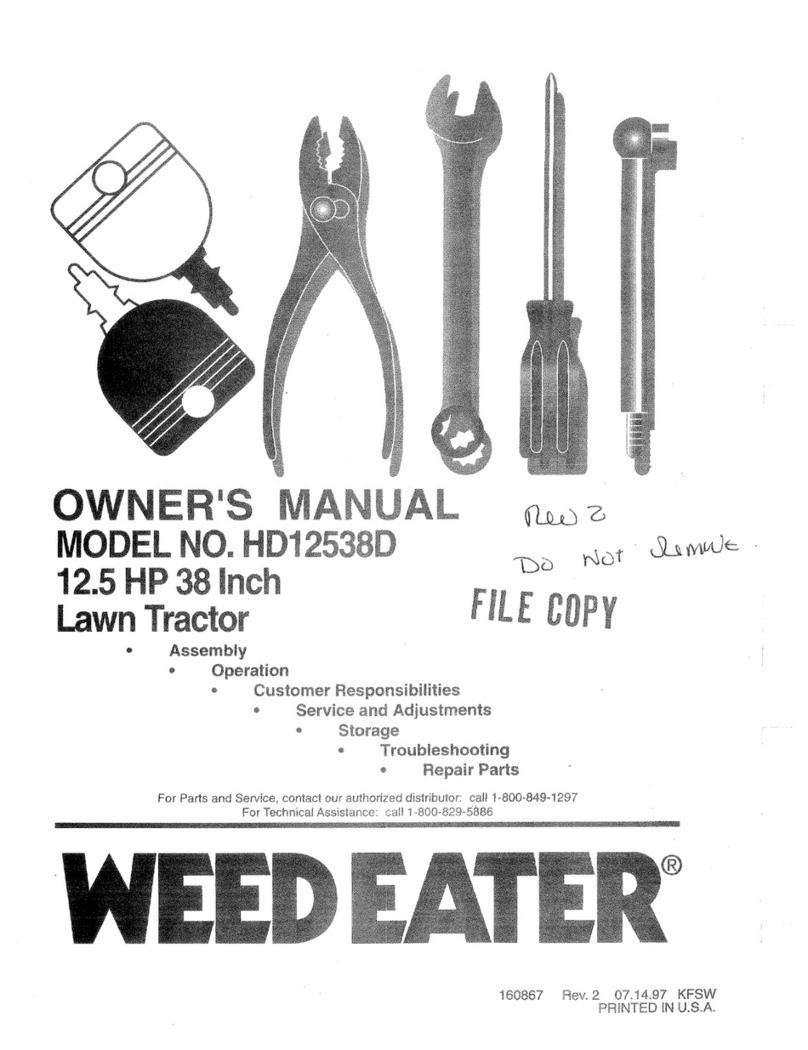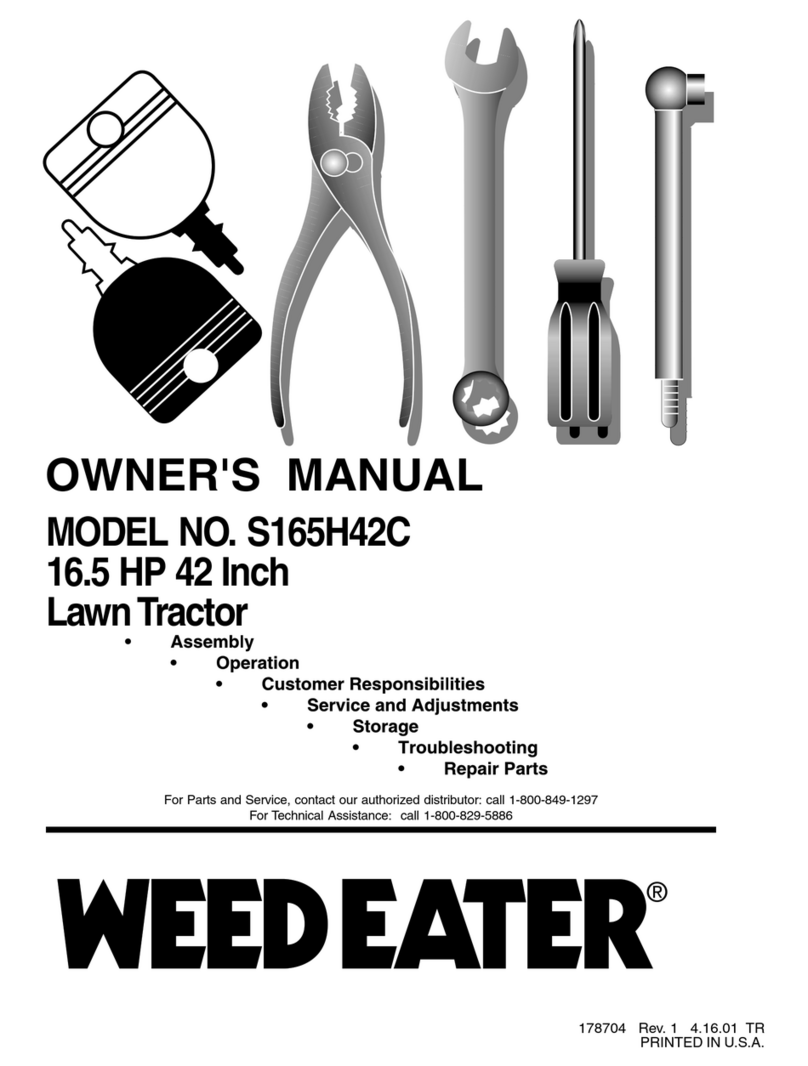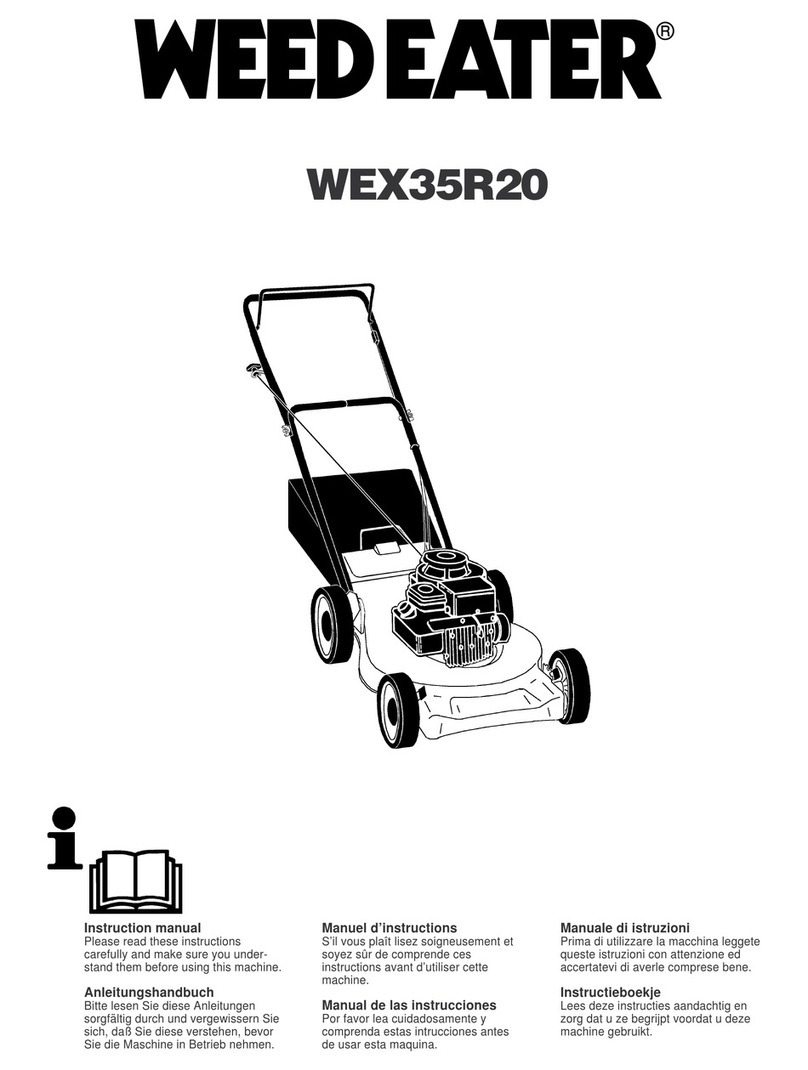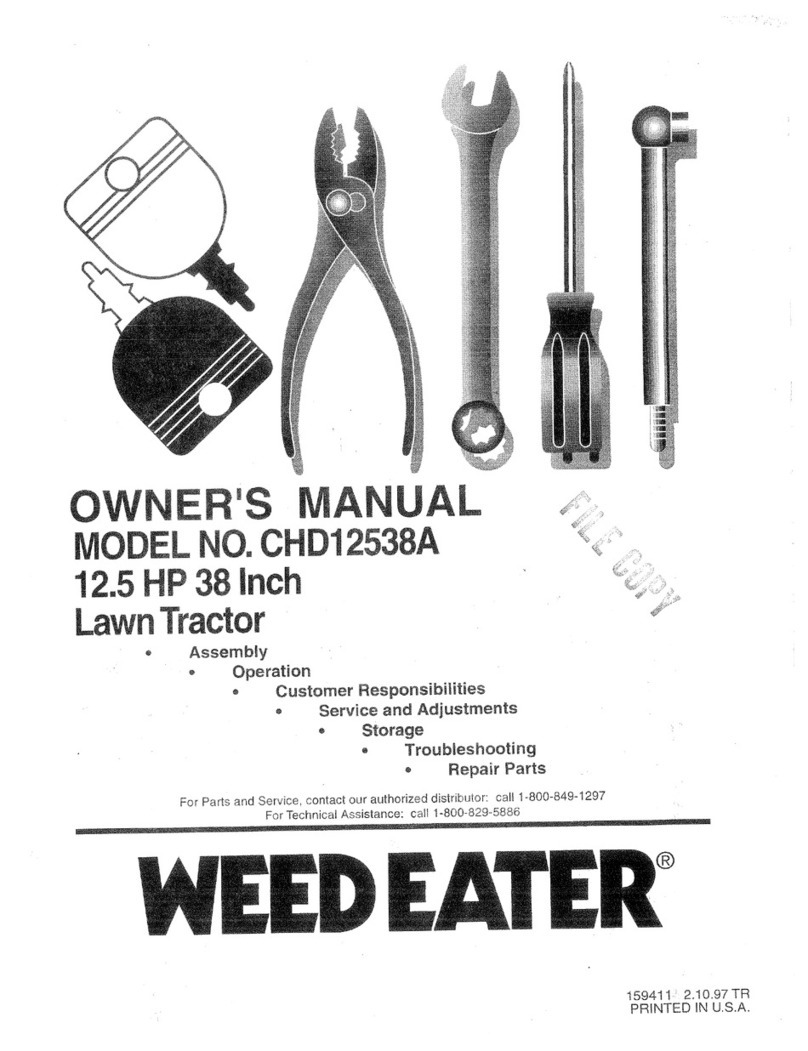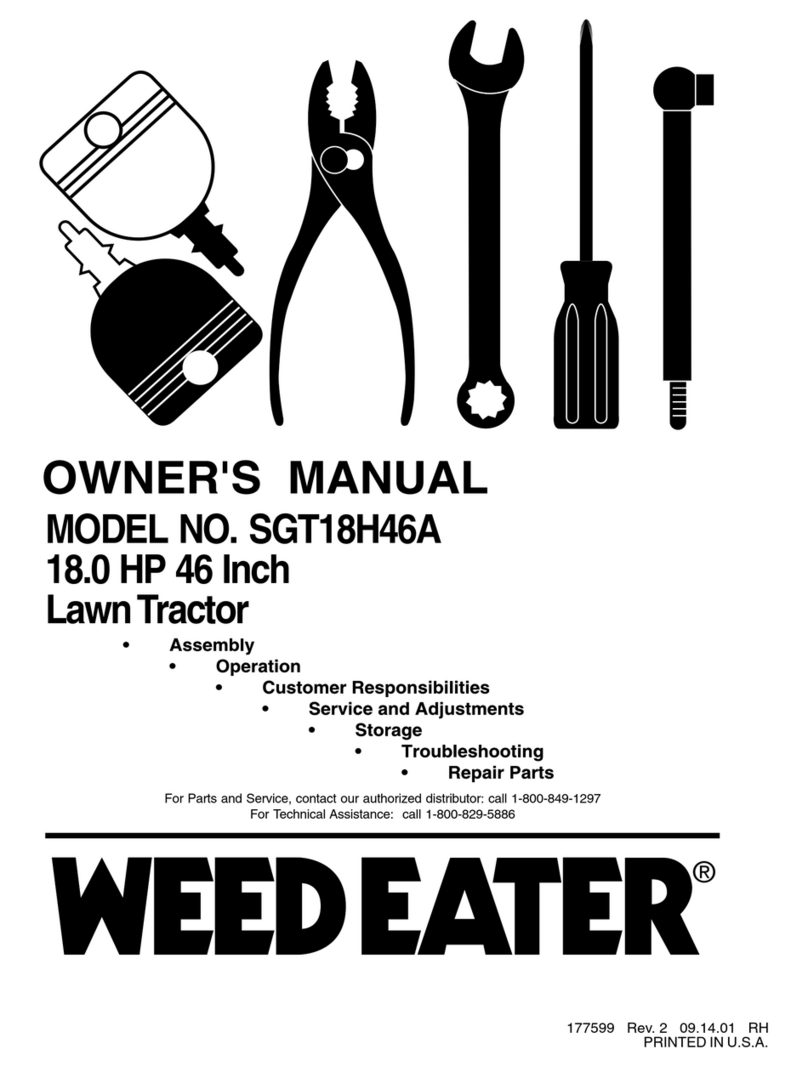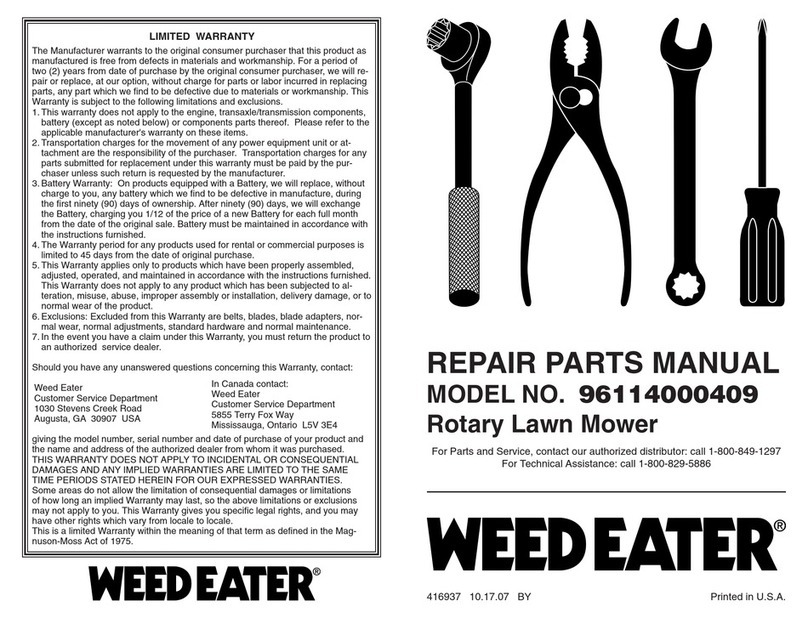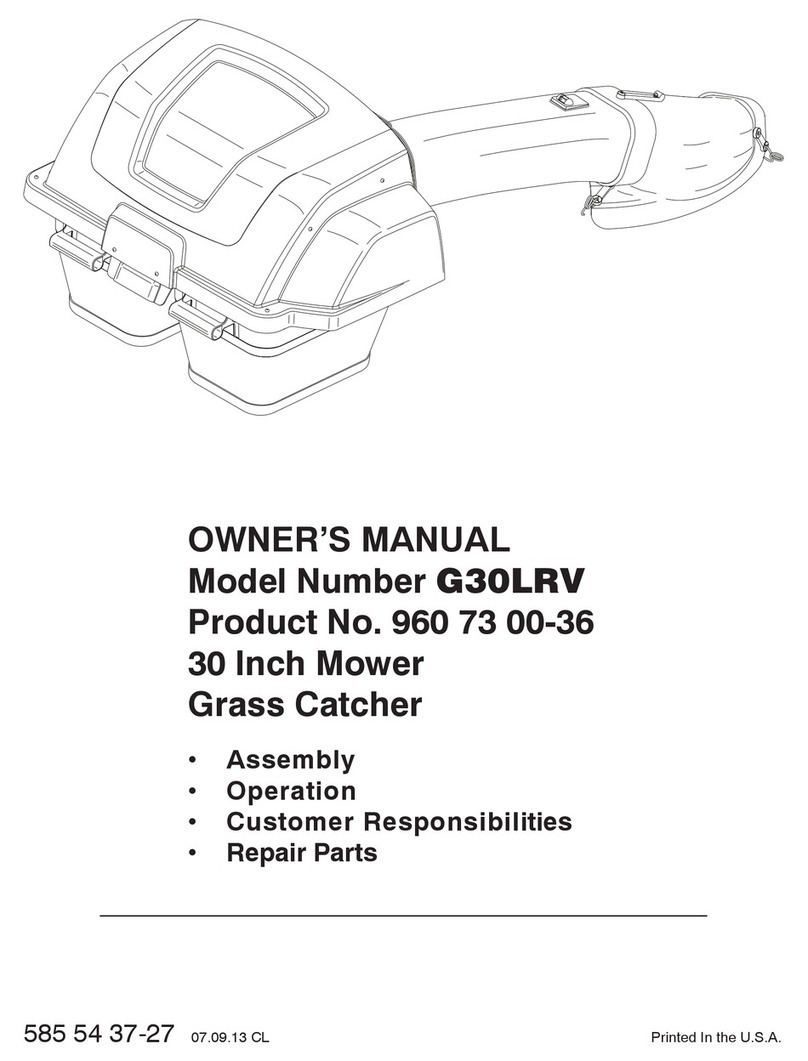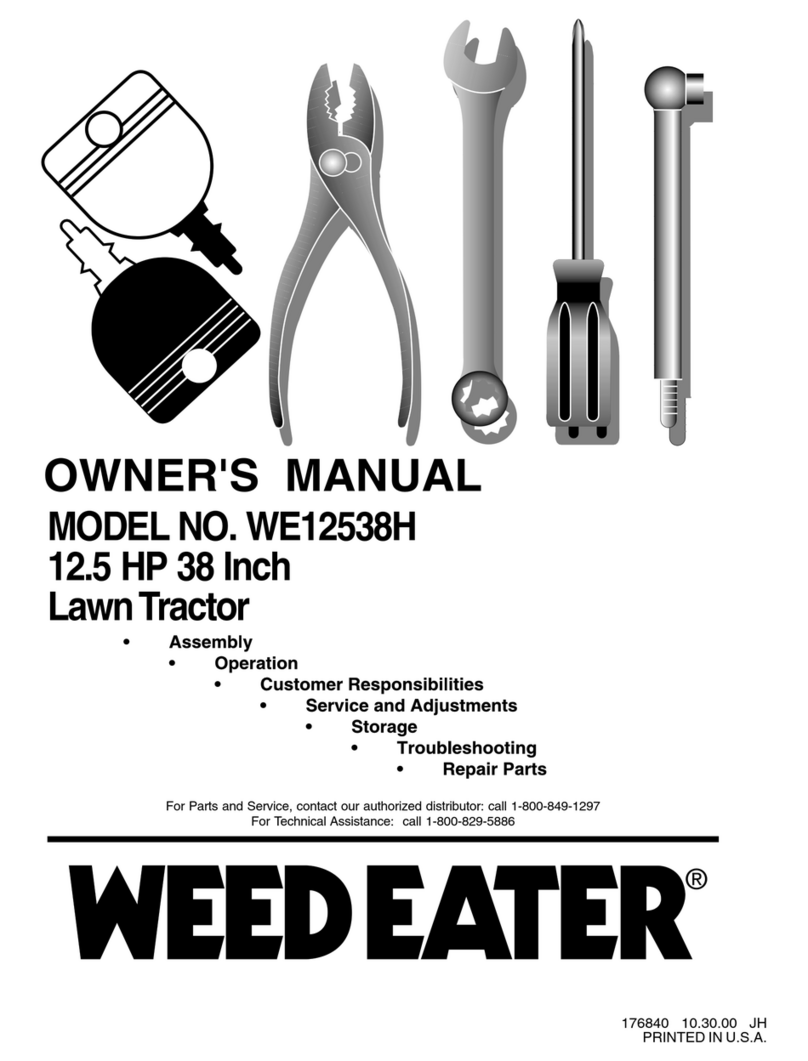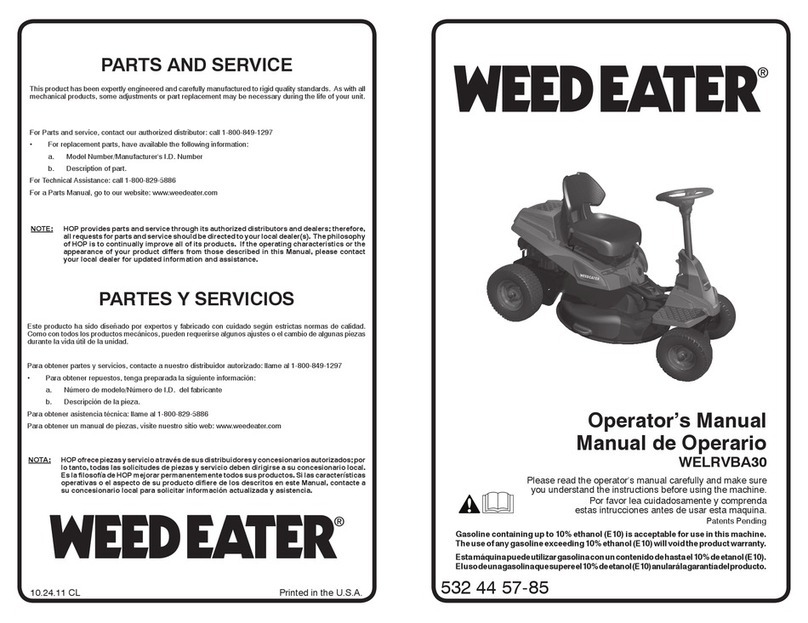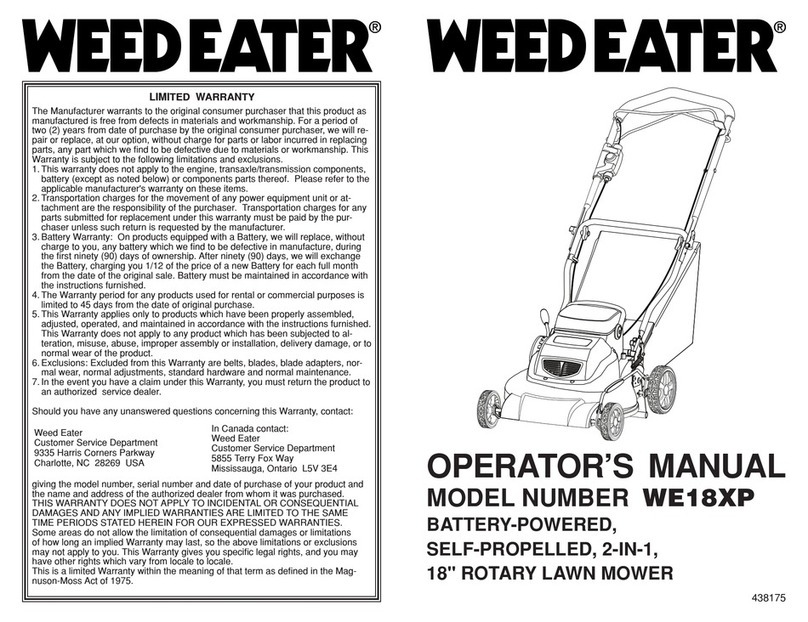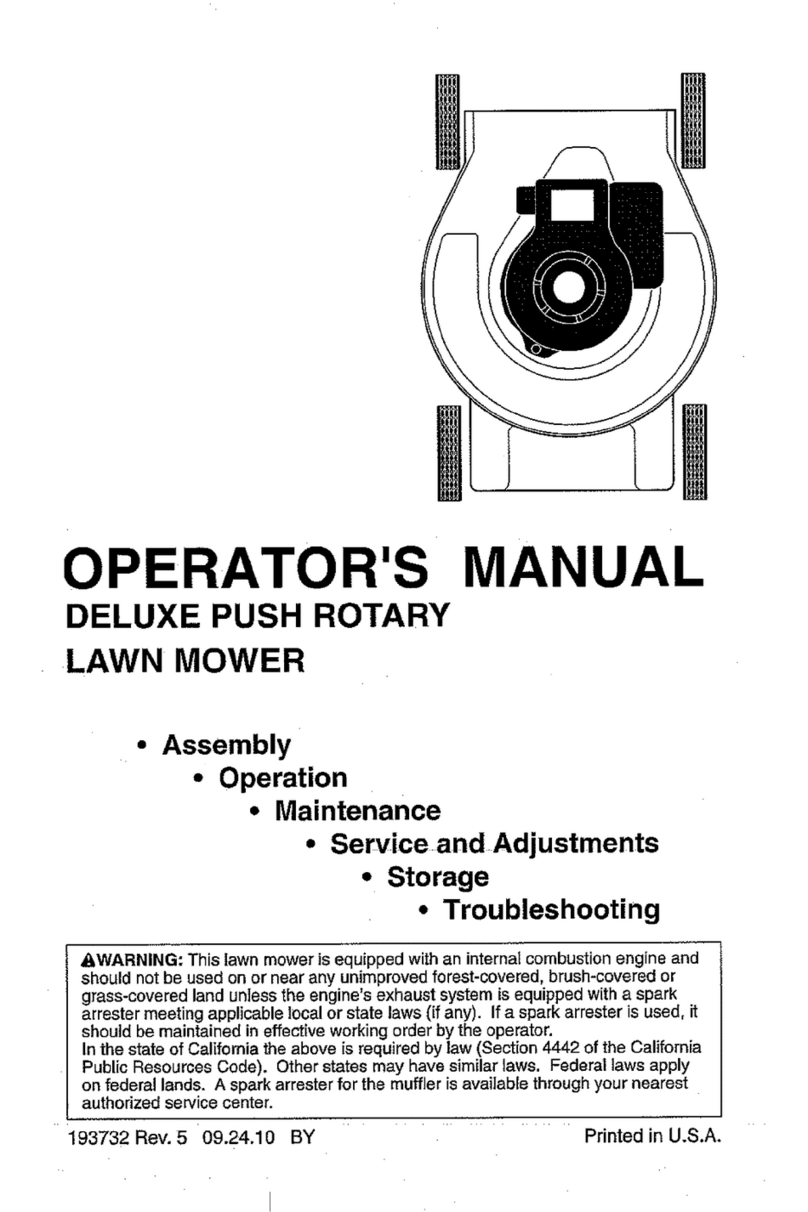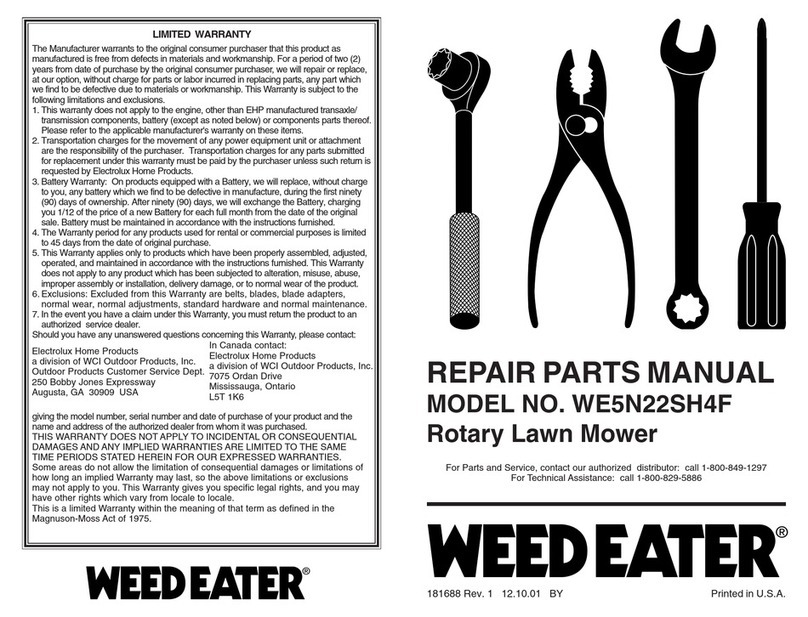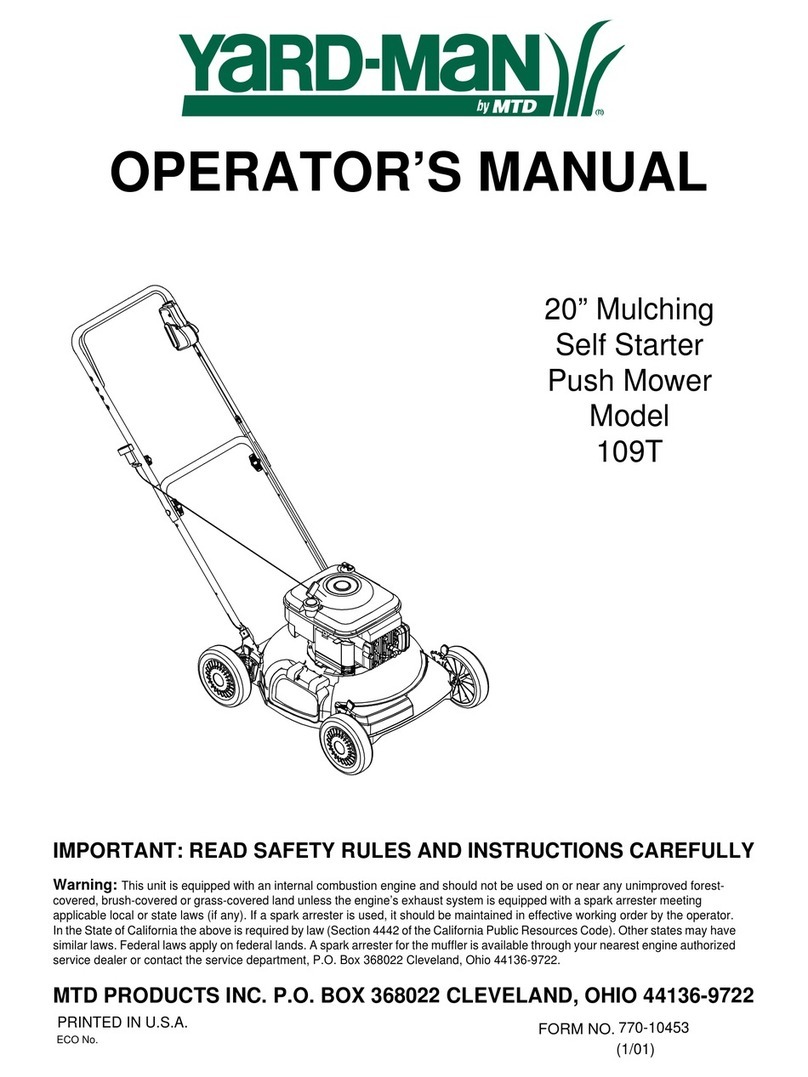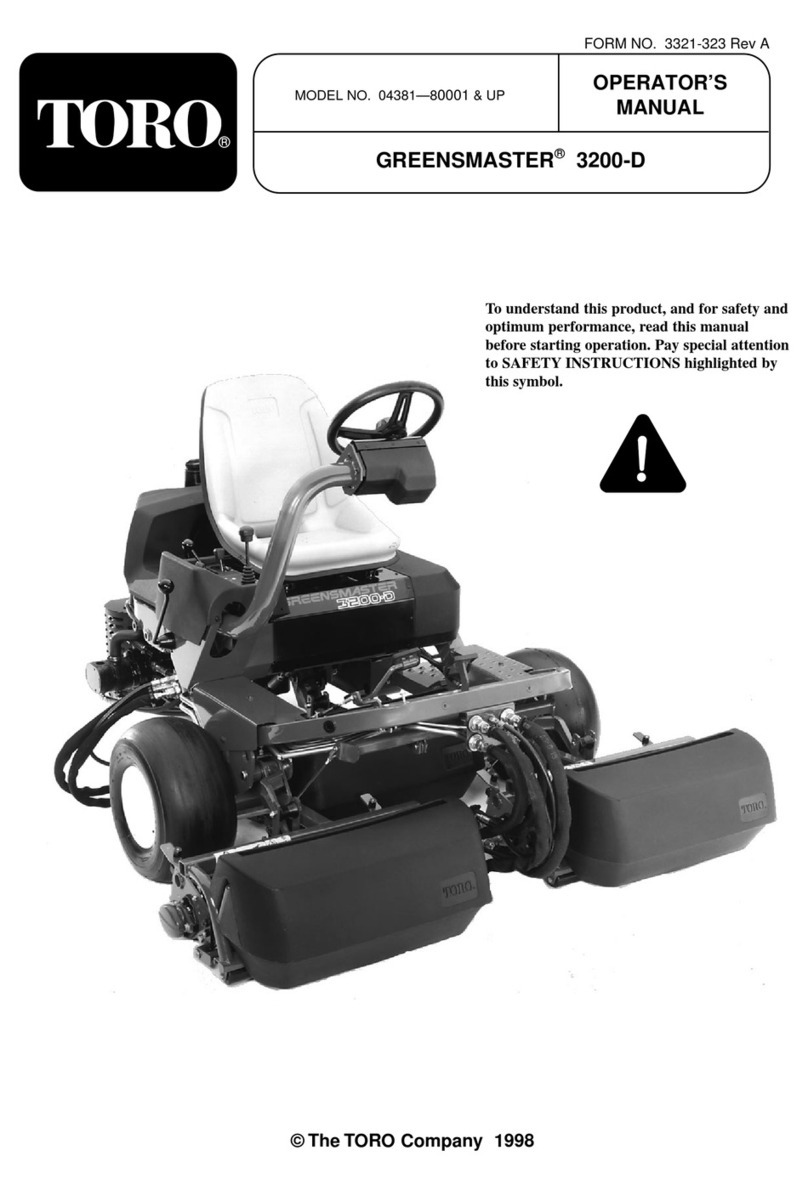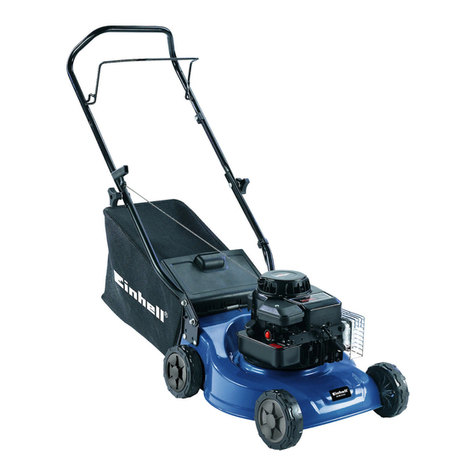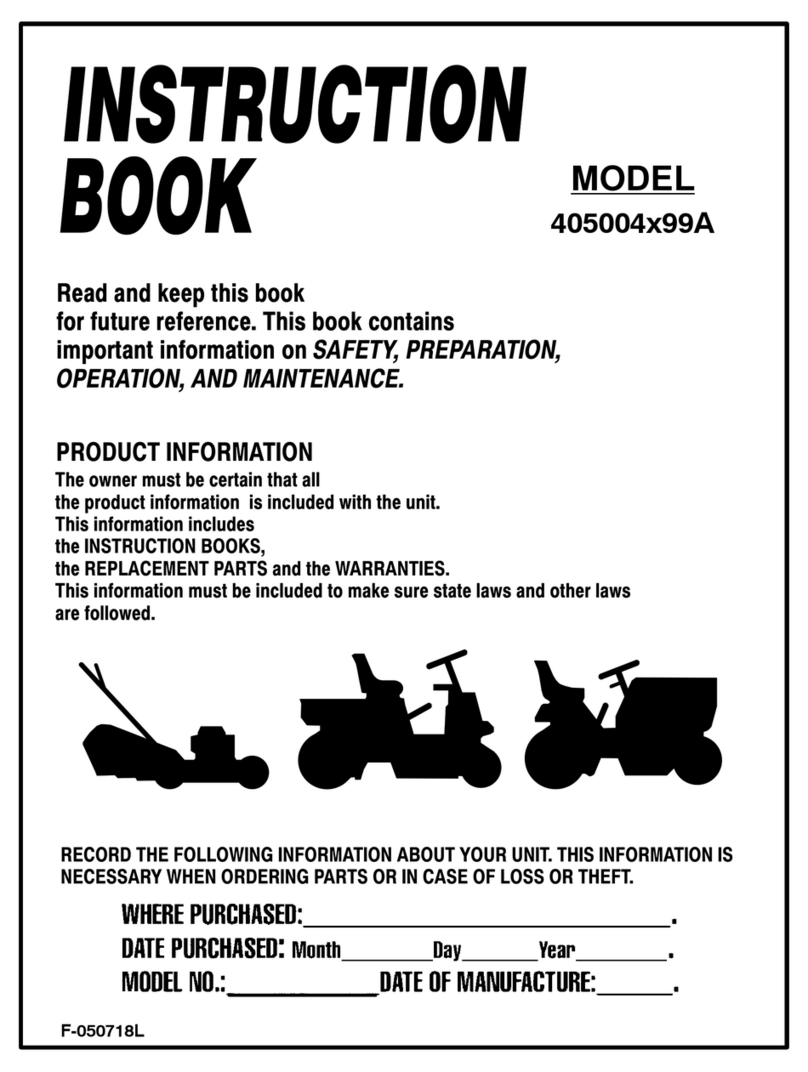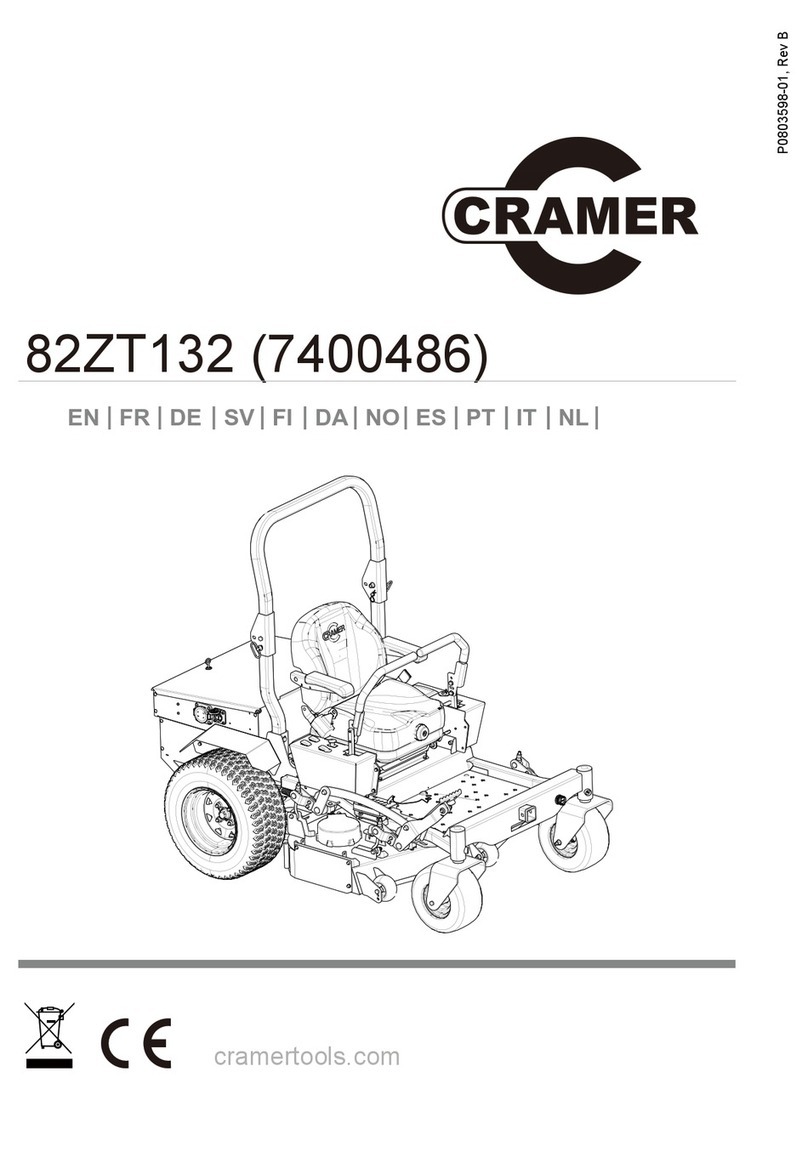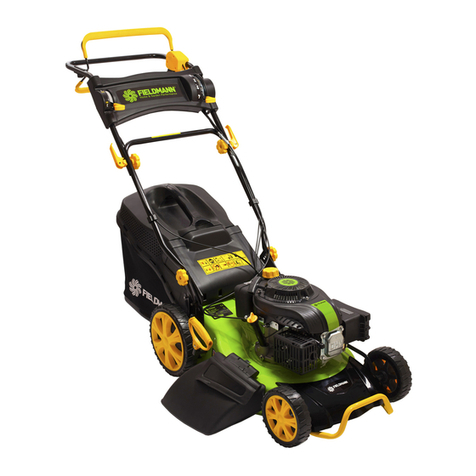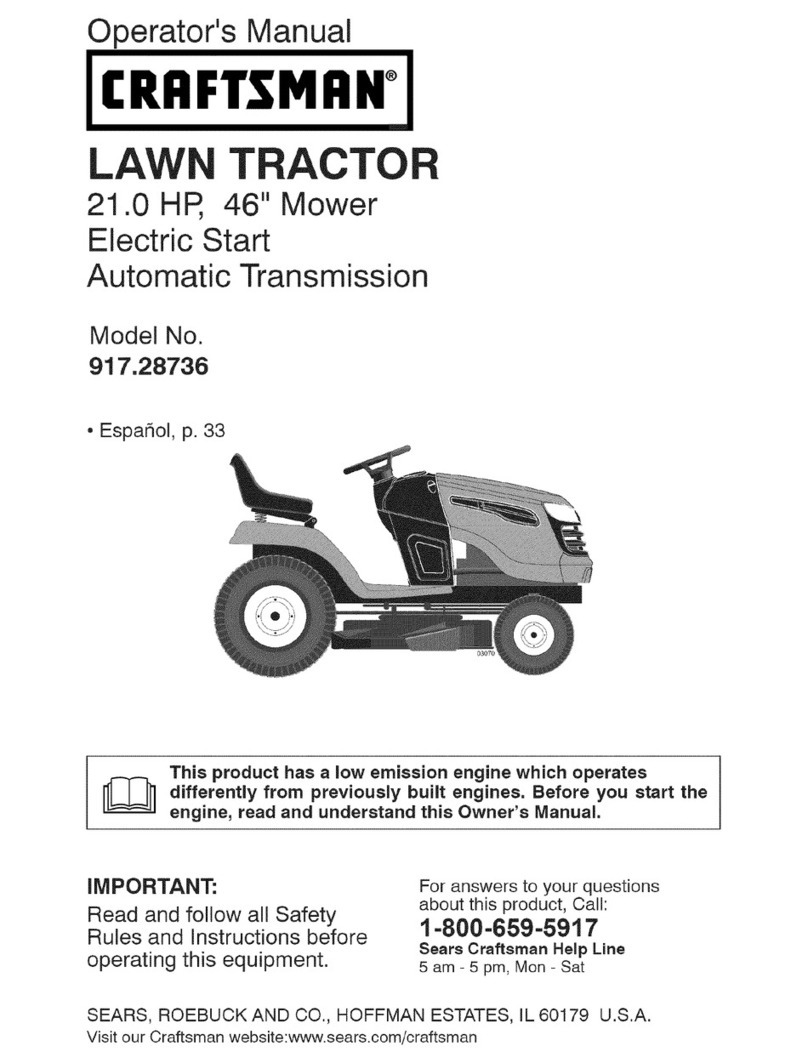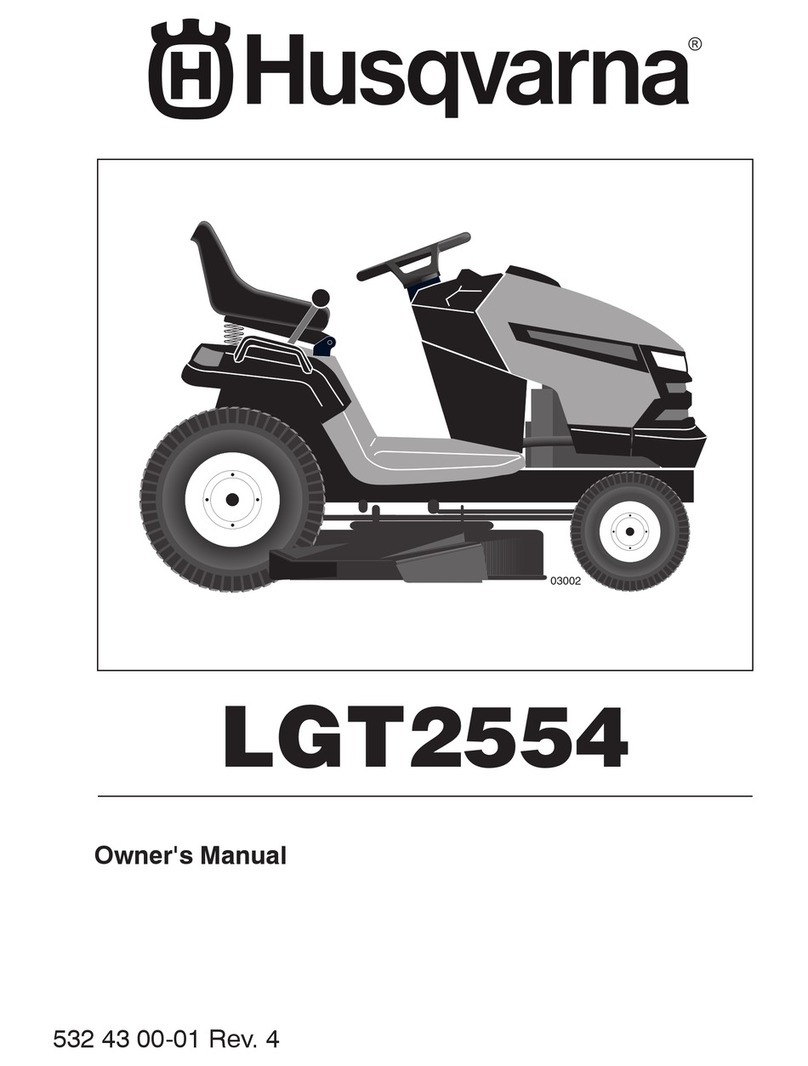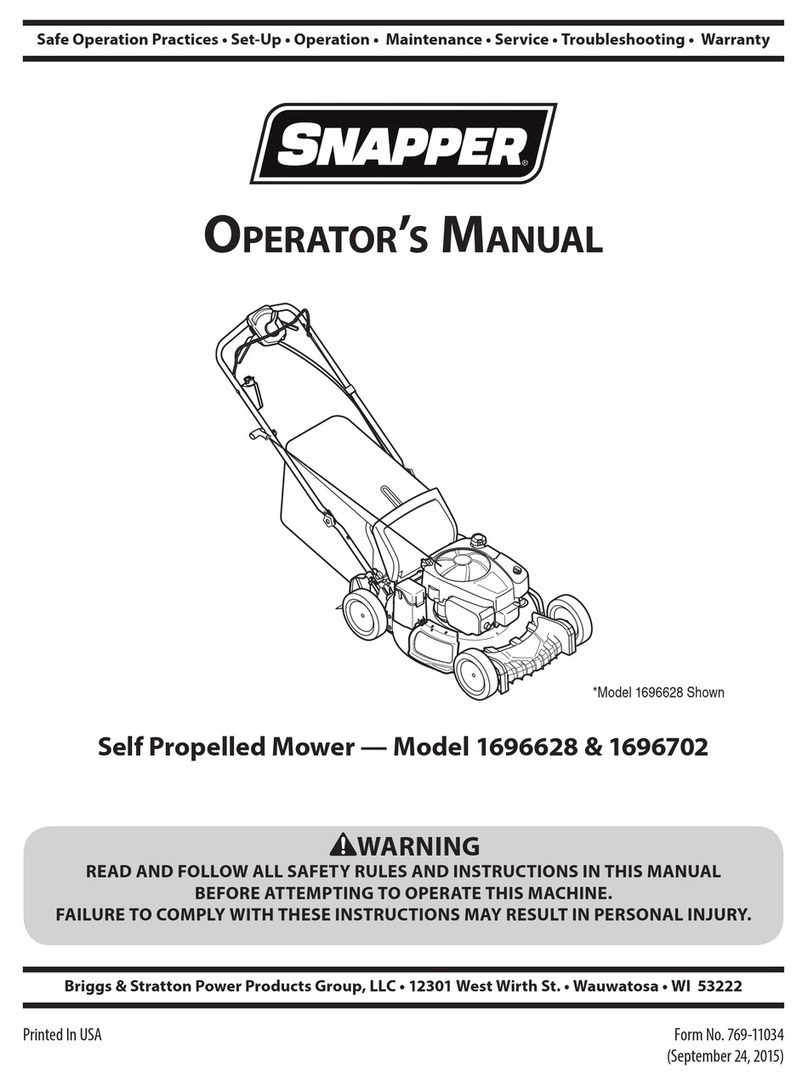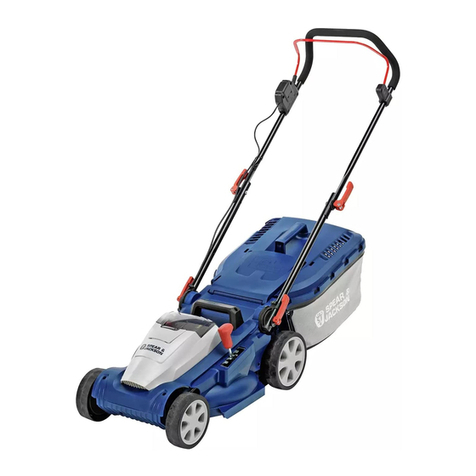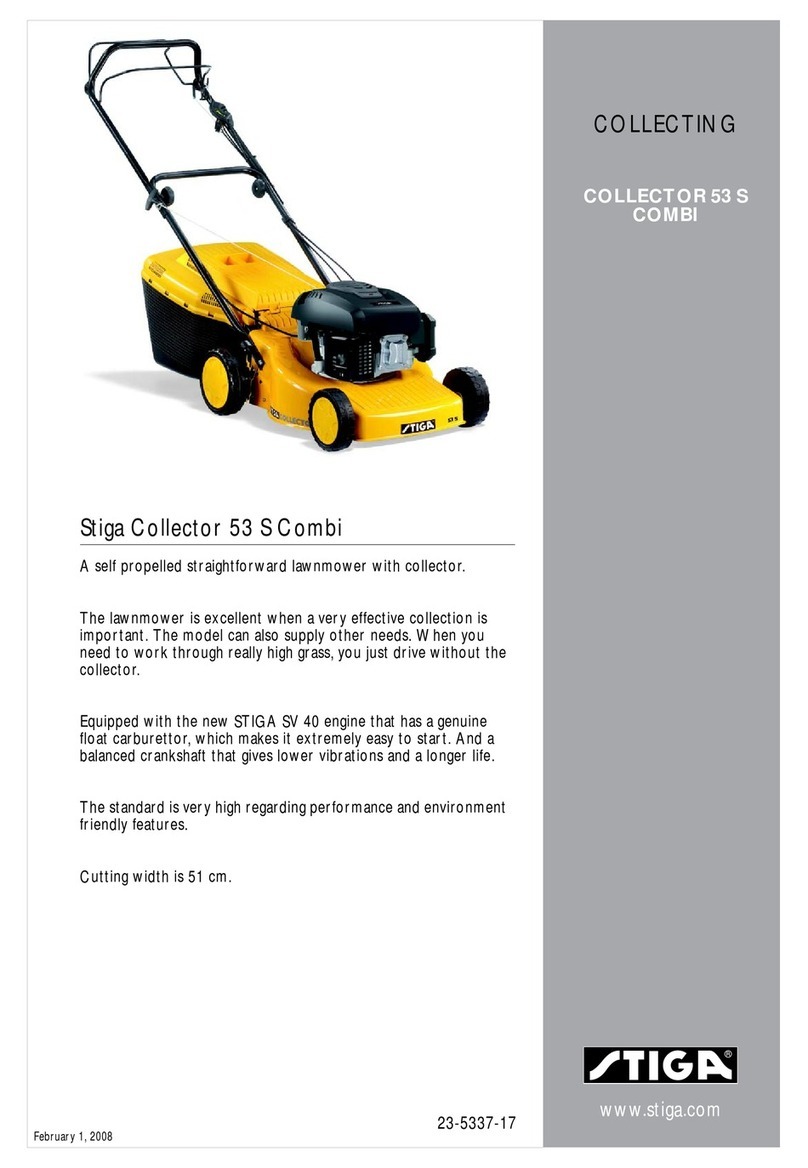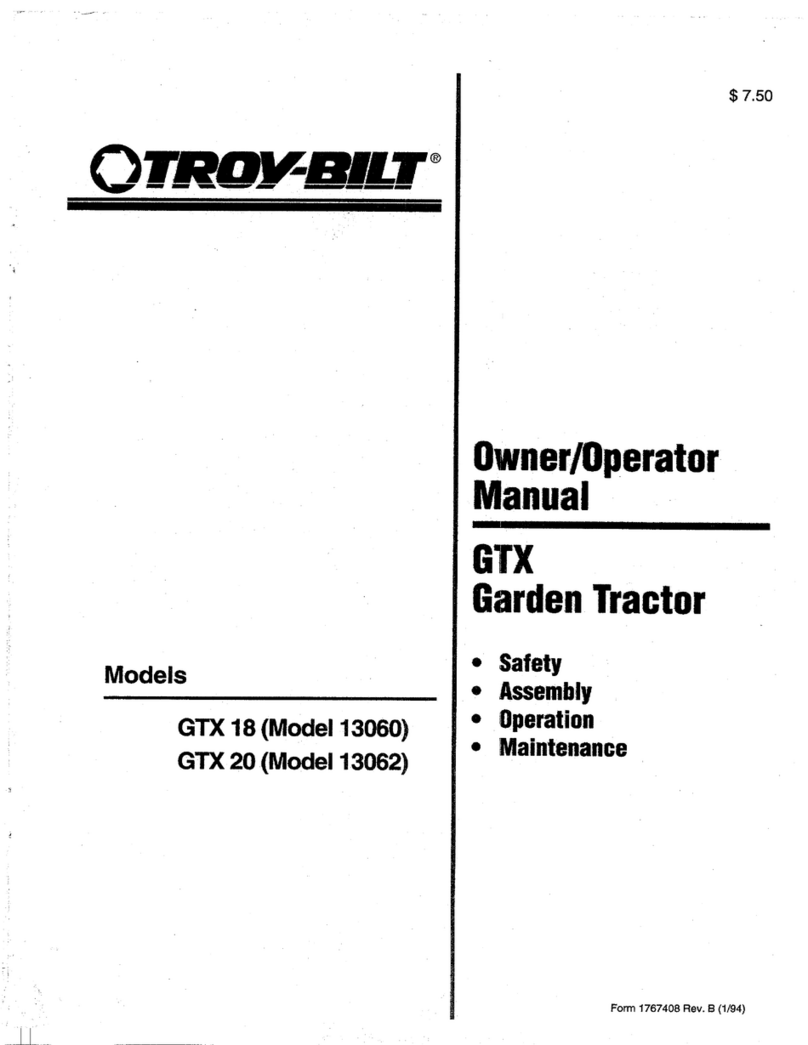SAFETY RULES
Safe Operation Practices for Ride-On Mowers
IMPORTANT: THIS CU'I-I'ING MACHINE ISCAPABLEOF AMPUTATINGHANDSAND FEET ANDTHROWING OBJECTS. FAILURE
TO OBSERVETHE FOLLOWING SAFETY INSTRUCTIONSCOULDRESULTIN SERIOUS INJURYOR DEATH.
I. GENERAL OPERATION
•Read, understand, and fellow all instructions in the
manual and on the machine before starting.
•Only allow responsible adults, who are familiar withthe
instructions, to operate the machine.
•Clear the area of objects such as rocks,toys, wire,etc.,
which could be picked up and thrown bythe blade.
•Be sure the area isclear of other people before mow-
ing. Stop machine if anyone enters the area.
•Never carry passengers.
•Do not mow in reverse unless absolutely necessary.
Always look down and behind before and while back-
ing.
•Be aware of the mower discharge direction and do not
point it at anyone. Do not operate the mower without
either the entire grass catcher or the guard in place.
•Slow down before turning.
•Never leave a running machine unattended. Always
turn off blades, set parking brake, stop engine, and
remove keys before dismounting.
•Turn off blades when not mowing.
•Stop engine before removing grass catcher or un-
clogging chute.
•Mow only in daylight or good artificial light.
•Do not operate the machine while under the influence
of alcohol or drugs.
•Watch fortraffic when operating near or crossingmad-
ways.
•Use extracare when loading or unloading the machine
into a trailer or truck.
•Data indicates thatoperators, age 60 years and above,
are involved in a large percentage of riding mower-re-
lated injuries. These operators should evaluate their
ability to operate the riding mower safely enough to
protect themselves and others from sedous injury.
•Keep machine free of grass, leaves or other debris
build-up which can touch hot exhaust / engine parts
and burn. Do not allow the mower deck toplow leaves
or other debris which can cause build-up to occur.
Clean any oil or fuel spillage before operating or
storing the machine. Allow machine to cool before
storage.
II. SLOPE OPERATION
Slopes are amajor factor related to loss-of-control and
tipever accidents, whichcan resultinsevere injuryor death.
All slopes require extra caution. Ifyou cannot back up the
slope or if you feel uneasy on it, do not mow it.
DO:
•Mow up and down slopes, not across.
•Remove obstacles such as recks, tree limbs, etc.
•Watch for holes, ruts, or bumps. Uneven terrain could
overturn the machine. Tallgrass can hide obstacles.
•Use slow speed. Choose a low gear so that you will
not have to stop or shift while on the slope.
•Followthe manufacturer's recommendations forwheel
weights or counterweights to improve stability.
•Use extracare with grasscatchers orotherattachments.
These can change the stability of the machine.
•Keep all movement on the slopes s/ow and gradual.
Do not make sudden changes in speed or direction.
2
• Avoid starting or stopping on a slope. Iftires lose trac-
tion, disengage the blades and proceed slowly straight
down the slope.
DO NOT:
•Do not turn on slopes unless necessary, and then,
turn slowlyand gradually downhill, if possible.
•Do not mow near drop-offs, ditches, or embankments.
The mowercould suddenly turn over ifawheel isover
the edge of a cliffor ditch, or ifan edge caves in.
•Do not mow on wet grass. Reduced traction could
cause sliding.
Do not tryto stabilize the machine byputting yourfoot
on the ground.
•Do not use grass catcher on steep slopes.
IlL CHILDREN
Tragic accidents can occur if the operator is not alert to
the presence of children. Children are often attracted to
the machine and the mowing activity. Never assume that
children will remain where you lastsaw them.
•Keep children out of the mowing area and under the
watchfulcare of another responsibleadult.
•Be alert and turn machine offifchildren enter the area.
•Before and when backing, look behind and down for
small children.
Never carry children. They may falloffand be seriously
injured or interfere with safe machine operation.
•Never allow children to operate the machine.
•Useextracare when approaching blindcomers, shrubs,
trees, or other objects that may obscure vision.
IV, SERVICE
•Use extra care in handling gasoline and other fuels.
They are flammable and vapors are explosive.
-Use only an approved container.
-Never remove gas cap or add fuel with the engine
running. Allow engine to cool before refueling. Do
not smoke.
- Never refuel the machine indoors.
-Neverstorethe machineorfuelcontainer insidewhere
there isan open flame, such as a water heater.
•Never run a machine inside a closed area.
•Keep nutsand bolts,especially bladeattachment bolts,
tightand keep equipment in good condition.
•Never tamper with safety devices. Check their proper
• operation regulady.
•Keep machine free of grass, leaves, or other debris
build-up. Clean oil or fuel spillage. Allow machine to
cool before stodng.
•Stop and inspectthe equipment if you strike an object.
Repair, it necessary, before restarting.
•Never make adjustments or repairs with the engine
running.
•Grass catcher components are subject to wear, dam-
age, and detedoration, which could expose moving
parts or allow objects to be thrown. Frequently check
components and replace with manufacturer's recom-
mended parts, when necessary.
•Mowerbladesaresharp and cancut. Wrap the blade(s)
or wear gloves, and use extra caution when servicing
them.
• Check brake operation frequently. Adjust and service
as required.





















